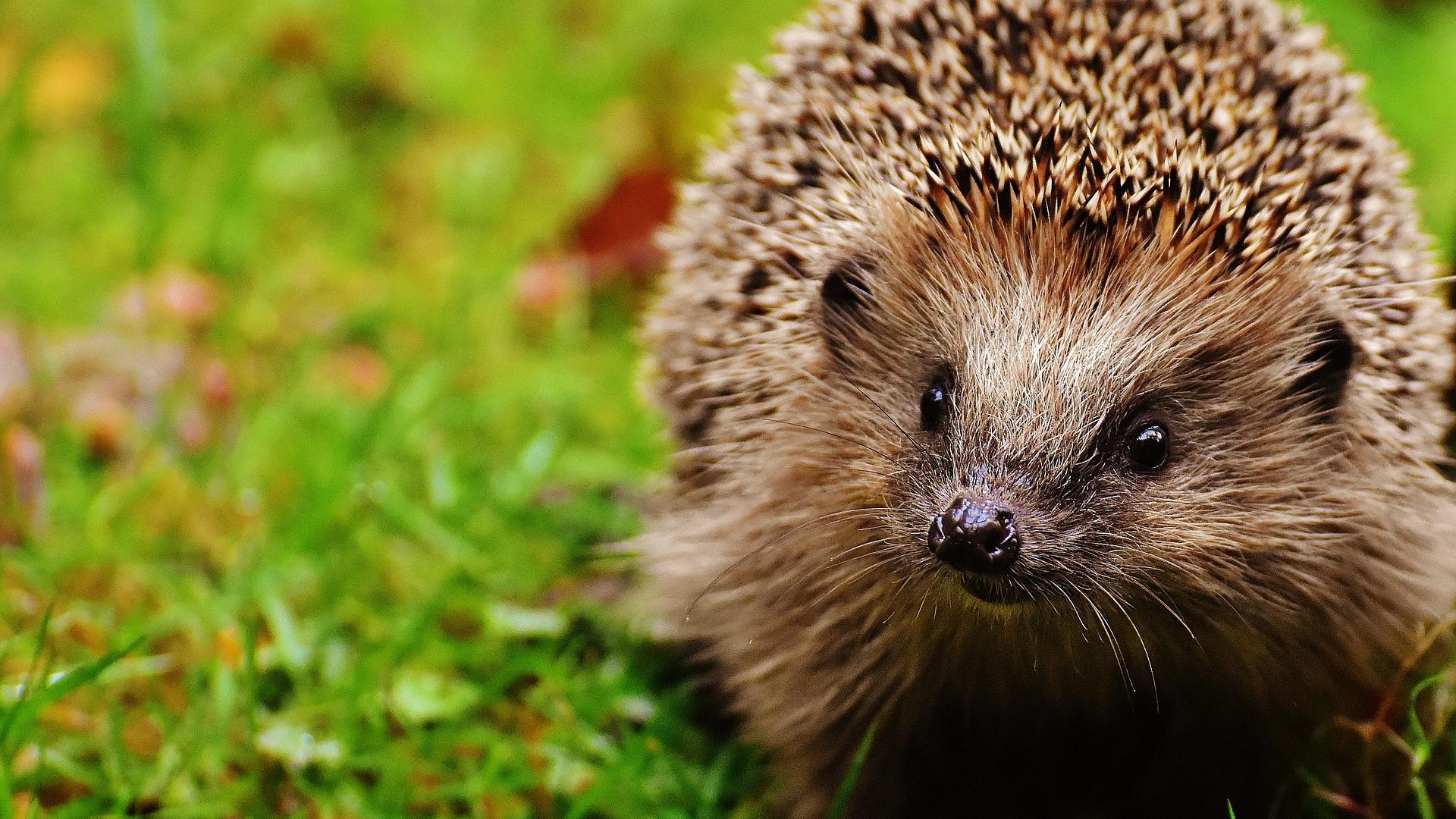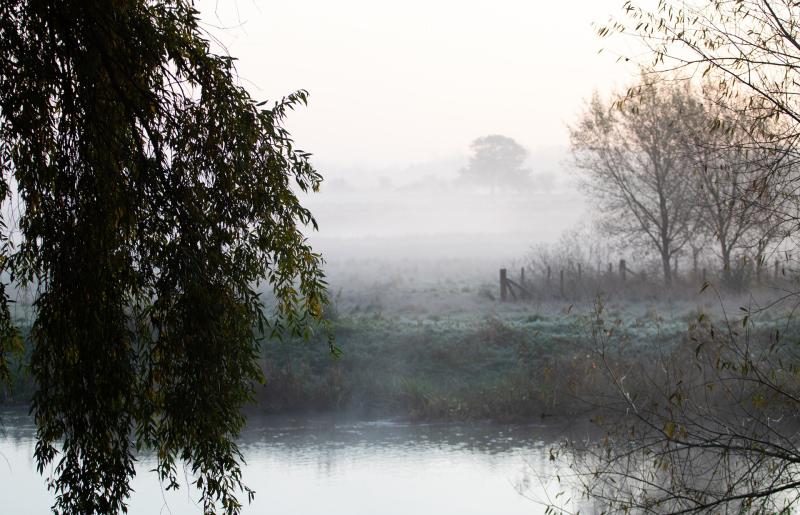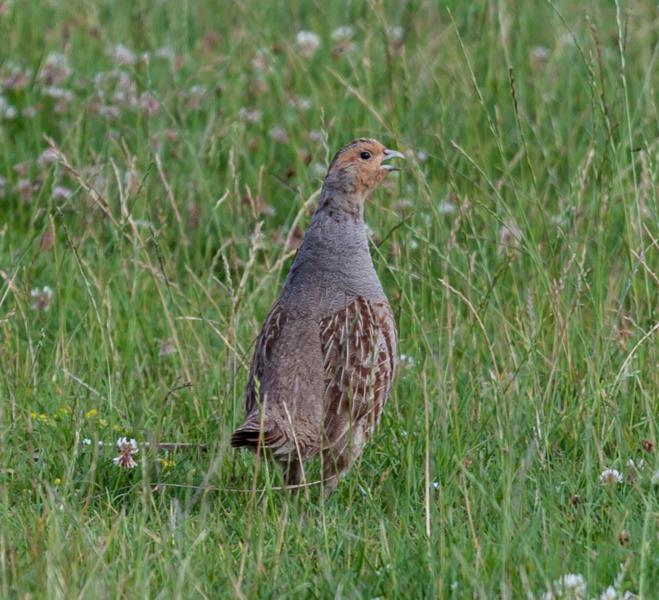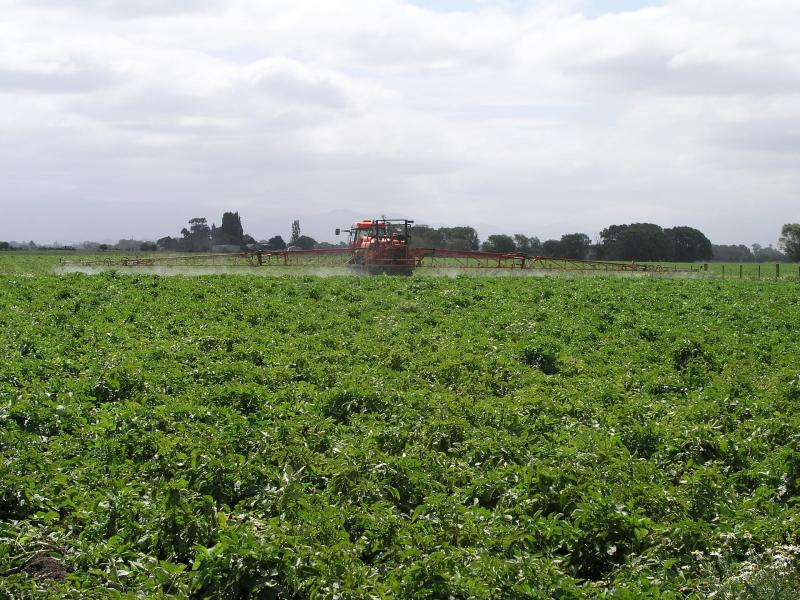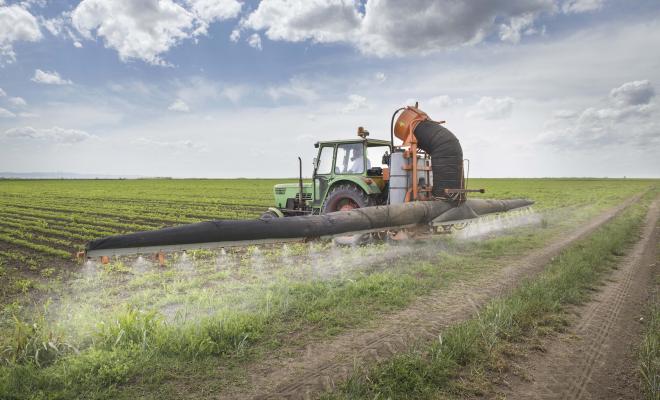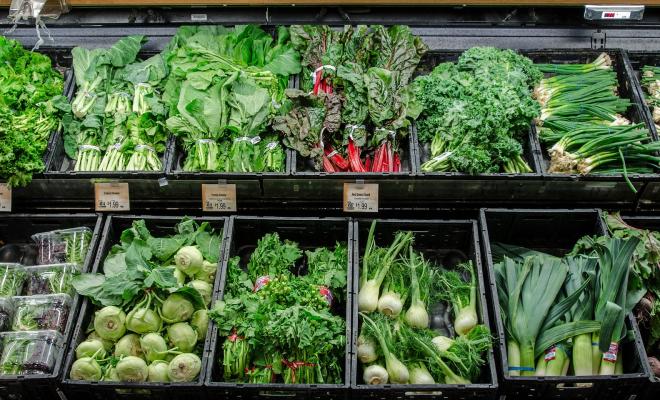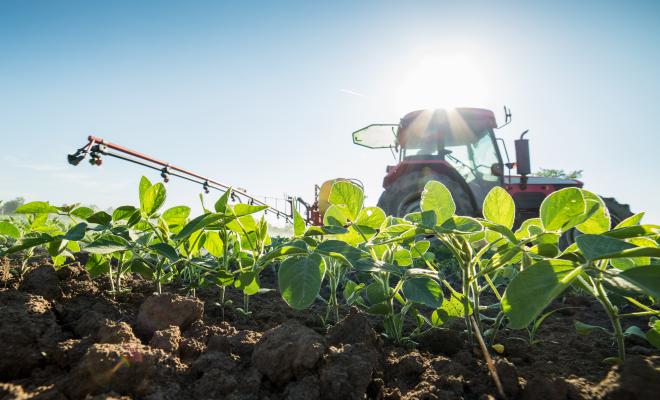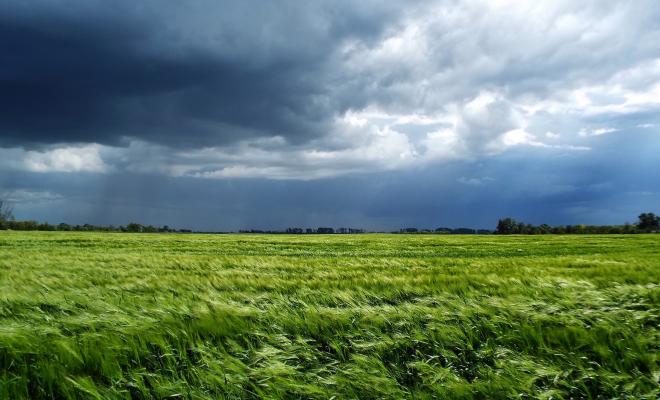Paul de Zylva06 Dec 2019
We know pesticides harm bees – the evidence is compelling. What about other wild species? When I searched for the effect of pesticides on wildlife, I couldn’t find a good summary so I produced this one.
In our new report 'Problems with Pesticides' I’ve pulled together the main findings of recent scientific studies and reviews of evidence from the UK and beyond.
From butterflies, beetles, damselflies and hoverflies to earthworms, hedgehogs, frogs and fish – not forgetting the impact on our water and soils – the evidence shows that problems with pesticides go well beyond bees.
...many species have struggled as their habitats have shrunk and climate change and pesticide use have taken their toll.
Sir David Attenborough
Bees and beyond
It’s well known that bees are in trouble and their exposure to pesticides isn’t helping. After all, pesticides are insecticides and are designed to kill insects – the clue’s in the name.
Pesticides include chemicals that kill insects (insecticides), plants (herbicides) and fungi/moulds (fungicides). They’re widely used on farms, in horticulture, in domestic gardens and household products, and to manage parks, housing estates, sports grounds, golf courses, pavements and roadsides.
The pesticide and industrial farming lobby insists crop protection and other products are aimed at real pests like aphids, but are safe for the insects we love, like bees. But independent studies show that routine and rising pesticide use isn’t smart enough to discriminate between species.
Most of the widely used chemicals are broad spectrum, meaning they affect more than just the intended target pest, disease or weed. If you’re a bee nesting or feeding near crops treated to control pests, like flea beetles, you’re likely to get a potentially harmful dose, like it not. There’s also evidence of harm to soils and water, and the organisms that depend on them.
None of this has stopped the pesticides lobby pouring scorn on anyone who questions pesticide use, including independent scientists and researchers whose studies have exposed how pesticides passed as safe still harm a range of bee species and other vital pollinating insects. Problems with Pesticides also shows that other wild species and habitats are harmed.
Although pesticides were used initially to benefit human life through increase in agricultural productivity and by controlling infectious disease, their adverse effects have overweighed the benefits associated with their use. Gill and Garg, 2014
Creature contact with chemicals
It’s easy for wildlife to come into contact with chemicals, because the abundance of pesticides in fields, streets, parks and watercourses means they get exposed in different ways.
They may be unintended victims but are affected because:
- Crop sprays drift outside the intended spraying area.
- Residues in soils affect the quality and structure of soils and can be toxic to soil-living organisms.
- Residues blown across fields and landscapes such as when fields are ploughed.
- Chemicals leach into soils and onward into rivers and water courses and affect aquatic life.
- When birds eat worms and insects, pesticide residues move up through the food chain.
- When herbicides kill plants regarded as weeds they remove vital sources of food and shelter for wild species, adding to pressure on them to relocate, alter their diet, or starve.
Effects of pesticides on a range of wildlife
Problems with Pesticides highlights the scientific evidence for pesticides harming many more wild species than tends to be publicised. This adds up to a profound impact on nature, including on species needed to pollinate our crops or keep our soils healthy.
Key findings:
Earthworms
These are harmed by herbicides and pesticides, which disrupt enzymatic activities, increase mortality, decrease fecundity and growth, and change their feeding behaviour. Earthworms are vital for soil health and recycling of plant material, yet pesticides appear to be jeopardising their reproduction and survival.
Soil-living organisms
As well as earthworms, other important organisms are being affected by the long-term, indiscriminate and excessive application of pesticides. Studies point to severe effects on soil ecology, including potentially undermining the ability of soils to enhance crop production.
Birds
Studies have linked bird decline to pesticide use in the Netherlands and France, and a UK study for the Health and Safety Executive reported that farming practices have driven the decline of farmland birds. For example, a study of grey partridges found "good evidence that herbicides have played a significant role in their decline.”
Butterflies
A long-term study from 1985 to 2012 found declines in 15 butterfly species corresponding with areas of highest use of pesticides.
That tallies with a study of butterflies across 19 European nations, which found large declines since 1990. “The pesticide problem is especially a problem in the intensive agricultural areas of western Europe...", said one of the study team.
Water quality
A study of contamination of UK rivers and freshwaters found half of water samples in England exceeded chronic pollution limits. 88% of samples showed pesticide contamination.
Aquatic insects such as damselflies and dragonflies get less attention, partly due to inadequate monitoring of pesticides in water. But they may be more vulnerable than thought because the neonicotinoid type of pesticide is highly mobile in water.
A study of common blue‐tailed damselflies has found neonicotinoids playing “a central role” in their decline. A study of once common dragonflies in Japan related their decline to use of pesticides in rice growing.
Fish
A 2019 study of fish species in Japan reports aquatic systems being “threatened by the high toxicity and persistence of neonicotinoid insecticides” with effects cascading through ecosystems to alter the structure of the food chain.
Frogs, toads, other amphibians and reptiles
These creatures also appear to be at risk. Laboratory and field tests have linked pesticides passed as safe to mortality in frogs and toads.
Wild plants
Inadequate monitoring makes it hard to attribute the decline or loss of wild plants directly to herbicide use but they will reach non-target plant and other species and UK plant charity Plantlife cites "extensive use of herbicides” as a reason for wildflowers disappearing across Britain.
Mammals
Mammals are not immune and a comprehensive review of 58 British mammal populations over 20 years found species such as hedgehogs, water voles, common and pygmy shrews declined by up to 66% over the past 20 years.
Hedgehogs are struggling for various reasons including habitat loss, land use change and a lack of insects for food, which is linked to use of pesticides and slug pellets in gardening.
The British Hedgehog Preservation Society has expressed concern about “the lack of food in sterile fields where lots of pesticides and chemicals are used – there are also larger scale farms so there are less hedgerows for hedgehogs to use.”
Why is this being allowed to happen?
Overuse of pesticides.
Pesticides are typically applied prophylactically even if the actual risk of harm from genuine pests or diseases is low.
Pesticides are widespread across landscapes and seasons and years, which is how long some pesticide residues can remain in soils, plant matter and in rivers, water courses and systems.
Incredibly, the effects of their ubiquitous use on species, habitats and the food chain are not tested or monitored. And the cocktail effect of different treatments used in combination isn’t well monitored.
While the effects of such overuse are unknown, there are concerns about reduced efficacy and pest resistance, similar to those about the overuse of antibiotics in treating animals and humans.
Rising use of pesticides
The area of the UK planted with crops has remained constant at about 4.6 million hectares (ha), yet the total area treated with individual active ingredients in pesticides rose from 59 million ha in 2000 to 73 million ha in 2016.
That 24% rise in active ingredients applied to land meant the average of 12.8 actives used per ha in 2000 rose to 15.9 per ha in 2016. Clearly, several active ingredients may be applied together but spray passes are also rising. In 2000 41% of cereal hectarage was sprayed more than four times, but by 2016 this had increased to 55%.
Flawed pesticide testing.
The problem starts much earlier with the testing of pesticides, long before bees, beneficial bugs and other wild species are affected. The safety checks for pesticides are not as robust and rigorous as the public has been told. For example:
- Products are tested on a narrow set of species rather than the full range likely to be affected and whose biology and tolerance will differ from the intended target.
- Tests don’t properly assess both lethal effects (how much of a product is needed to kill its target) and non-lethal effects, like harming the ability to feed and reproduce.
- Unrealistic testing of products on their own, instead of how they’re actually used on the farm or in combination with other treatments.
Doctors and pharmacists advise us how to avoid cocktail-type side-effects when taking prescription treatments, but bees and other creatures don’t benefit from such knowledge because the testing is inadequate.
Pesticides and food security
For years, the orthodox view has been that pesticides are needed for food production, crop yields and security of food supply. But it’s increasingly recognised that routine use of pesticides is not essential for crop production and has serious implications for our environment, our health and future food security.
The UN blew apart such claims when it linked the self-interest of the pesticides industry with the loss of diverse farming systems, and the decline of natural predators with rising food insecurity and pest resistance. It said:
“The assertion promoted by the agrochemical industry that pesticides are necessary to achieve food security is not only inaccurate, but dangerously misleading. In principle, there is adequate food to feed the world; inequitable production and distribution systems present major blockages that prevent those in need from accessing it. Ironically, many of those who are food insecure are in fact subsistence farmers engaged in agricultural work, particularly in lower-income countries.”
If the amounts of money spent on pesticides went instead to nature-friendly farming, crop production could be supported without harming nature, soils, water and health.
So how can we turn the tide against pesticides?
Reduce pesticide use
Our report starts with setting ambitious targets to reduce the use and impacts of pesticides, ensuring they are used as a last resort, not a prophylactic first line of defence.
To do this needs financial support and incentives to farmers and landowners to be geared to boost the take up of more sustainable ways to manage land and crops.
Independent advice
We must improve the advice given to farmers, growers and landowners. And make sure information is independent of the pesticides industry and its advisers, but instead supports knowledge transfer to and between users on ways to control actual pests.
More research into sustainable methods
Boosting research into and development of alternatives ways to produce and protect crops is going to be crucial to farmers – innovative farmers trialling different methods are too often left to go it alone. We know enough to act now. But even with a significant reduction in pesticides, it’s vital that the products which remain in use are properly tested.
A robust testing and monitoring regime
The way pesticides are tested must be truly robust, rather than the flawed system currently in place. Product testing must cover all species likely to be affected, as well as cocktail effects on species when products are used in combination. Testing must be entirely independent of the pesticide industry.
Given the contamination of fields, water courses, habitats and landscapes, proper monitoring of pesticides is needed to track how they behave in the environment long after they have been applied, such as indirect effects on aquatic species.
The technology already exists for round-the-clock monitoring and tracking of pesticides’ real-world effects. Proper monitoring would then inform ongoing product testing to reduce or avoid the need for separate tests when the safety of a product is questioned.
Multiple benefits without pesticides
Modern industrial farming has created a culture of reaching for pesticides as an instant solution and has built over-dependence on these chemicals. In some cases pesticides have a place, but too little attention has been paid to other ways of producing and protecting crops.
Sustainable approaches can aid the restoration of soil health and water quality. And they can help more diverse wild species, including those which help control pests, to survive and thrive on farms and across entire landscapes.
Ultimately, farming and land use must move away from industrial monocultures to resilient and fully functioning natural ecosystems delivering multiple benefits.


